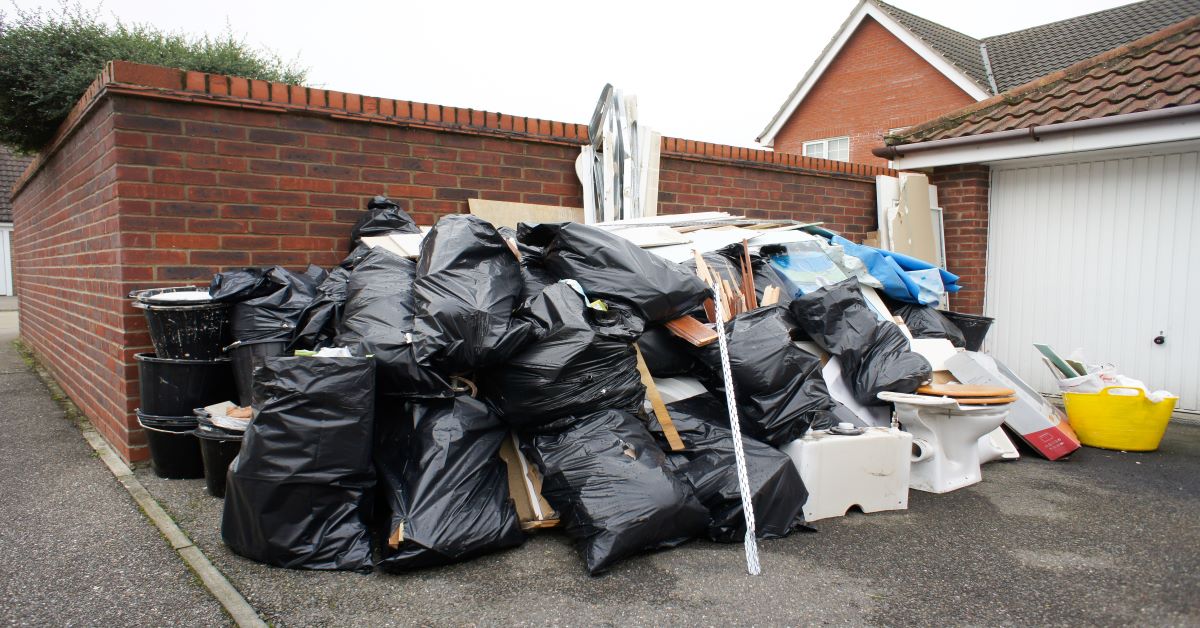Furniture Removal Atlanta: Hassle-free and Professional Pick-Up
Furniture Removal Atlanta: Hassle-free and Professional Pick-Up
Blog Article
Expert Waste Monitoring Approaches Customized for Industrial Settings
Customizing waste management approaches to fit the distinct demands of commercial setups is not simply helpful but important for preserving functional efficiency and environmental sustainability. The pursuit for improved waste monitoring in industrial settings entails a thorough strategy that stabilizes regulative conformity, cost-effectiveness, and eco-friendly duty.
Value of Tailored Waste Management
Customized waste monitoring techniques are important in industrial settings to optimize source utilization and minimize ecological effect. Industrial procedures produce a considerable amount of waste, varying from strong by-products to chemical pollutants, posturing a danger to the atmosphere if not taken care of effectively (Junk removal Atlanta). By tailoring waste monitoring approaches to fit the details requirements and difficulties of each commercial facility, companies can not only abide by policies yet also enhance operational effectiveness and sustainability
One key facet of tailored waste monitoring is carrying out a complete waste evaluation to identify the types and quantities of waste generated. This assessment allows business to implement targeted solutions such as recycling programs, waste partition protocols, and waste-to-energy initiatives. By recognizing the composition of their waste streams, industrial centers can create cost-effective strategies to lower waste generation at the source, bring about long-lasting ecological advantages.

Types of Hazardous Waste
What are the numerous classifications of hazardous waste frequently created in producing procedures? Hazardous waste can be identified into a number of main classifications based on its make-up and attributes. Contaminated materials is just one of the most important types, including chemicals, solvents, hefty metals, and various other products that position a risk to human wellness or the setting. This classification commonly calls for unique handling and disposal techniques to stop contamination and guarantee safety.
One more common type of hazardous waste is non-hazardous waste, which encompasses products like paper, plastics, and packaging waste. While non-hazardous waste may not posture prompt risks, proper management is still important to lower garbage dump usage and advertise recycling and sustainability practices.

Hazardous Waste Handling Procedures
Efficient monitoring of unsafe waste in industrial settings requires rigorous adherence to established taking care of procedures to mitigate threats and make sure environmental security. Dangerous waste handling treatments include several vital steps to minimize the possible influence on human unwanted furniture removal near me health and the environment.
Second of all, when recognized, contaminated materials has to be pick up junk removal thoroughly set apart from non-hazardous waste to avoid contamination and make sure proper treatment. Storage of unsafe waste should abide by laws pertaining to containment, labeling, and compatibility to stop leakages, spills, or various other cases that could endanger workers or the environment.
Additionally, taking care of procedures must consist of using personal safety tools, staff member training, and emergency feedback procedures. Routine examinations, surveillance, and documents of unsafe waste handling tasks are vital to maintaining conformity and identifying locations for renovation. By adhering to these structured procedures carefully, industrial facilities can successfully handle unsafe waste and support their dedication to ecological stewardship.
Executing Reliable Reusing Practices

To apply effective reusing techniques, industrial centers must initially conduct a waste audit to identify the types and amounts of recyclable products generated in their operations. Based upon this audit, companies can then develop assigned reusing Go Here terminals, provide ideal training to employees on correct sorting techniques, and collaborate with relied on reusing companions for the collection and processing of products. Furthermore, establishing particular reusing objectives, tracking progression, and routinely interacting with staff regarding the relevance of reusing are vital steps to ensure the success and sustainability of recycling efforts in industrial settings.
Tracking and Continual Enhancement
To make certain the performance and sustainability of waste administration approaches in commercial setups, the execution of robust surveillance and continual enhancement procedures is vital. Monitoring includes monitoring crucial performance indications (KPIs) such as waste generation rates, recycling portions, and disposal prices. Routinely examining these metrics permits businesses to identify areas for renovation and determine the success of carried out waste management campaigns.
Constant improvement is necessary for fine-tuning processes in time. It entails evaluating monitoring data, determining ineffectiveness, and executing adjustments to optimize waste administration methods additionally. This iterative strategy promotes a culture of recurring enhancement and development within the company.
Using innovation like waste monitoring software program and IoT sensors can simplify monitoring initiatives, offering real-time information for notified decision-making. Worker training and involvement also play a vital duty in guaranteeing the success of monitoring and continuous improvement initiatives, as frontline personnel are usually essential gamers in waste administration procedures.
Verdict
Finally, tailored waste management techniques are vital for commercial settings to properly handle various types of waste, consisting of hazardous materials. By applying efficient recycling techniques and continuously tracking and improving waste management procedures, markets can minimize their ecological impact and ensure compliance with policies. It is vital for business to prioritize waste monitoring to secure the environment and promote sustainability in their operations.
Report this page